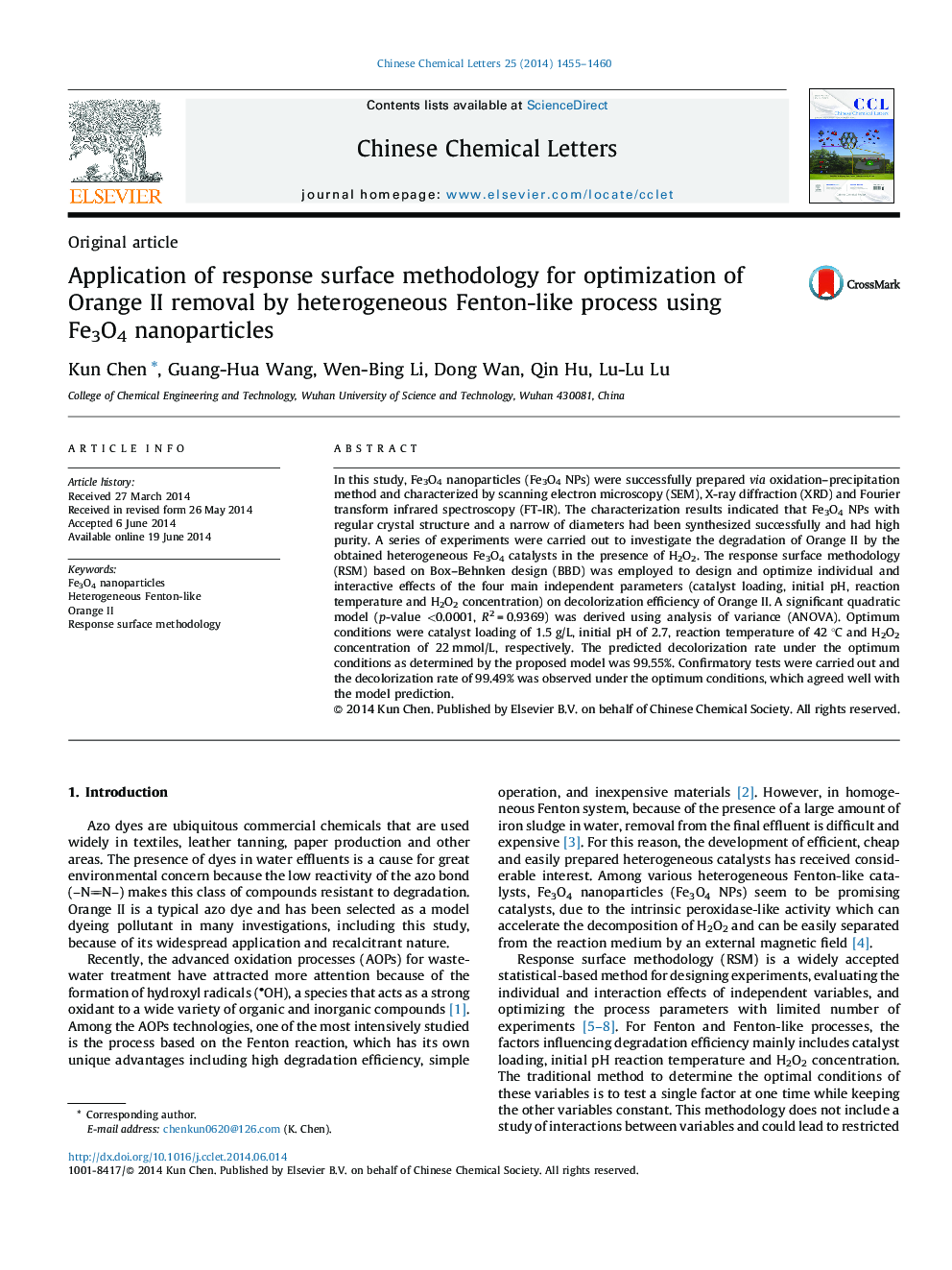| کد مقاله | کد نشریه | سال انتشار | مقاله انگلیسی | نسخه تمام متن |
|---|---|---|---|---|
| 1254509 | 971378 | 2014 | 6 صفحه PDF | دانلود رایگان |

In this study, Fe3O4 nanoparticles (Fe3O4 NPs) were successfully prepared via oxidation–precipitation method and characterized by scanning electron microscopy (SEM), X-ray diffraction (XRD) and Fourier transform infrared spectroscopy (FT-IR). The characterization results indicated that Fe3O4 NPs with regular crystal structure and a narrow of diameters had been synthesized successfully and had high purity. A series of experiments were carried out to investigate the degradation of Orange II by the obtained heterogeneous Fe3O4 catalysts in the presence of H2O2. The response surface methodology (RSM) based on Box–Behnken design (BBD) was employed to design and optimize individual and interactive effects of the four main independent parameters (catalyst loading, initial pH, reaction temperature and H2O2 concentration) on decolorization efficiency of Orange II. A significant quadratic model (p-value <0.0001, R2 = 0.9369) was derived using analysis of variance (ANOVA). Optimum conditions were catalyst loading of 1.5 g/L, initial pH of 2.7, reaction temperature of 42 °C and H2O2 concentration of 22 mmol/L, respectively. The predicted decolorization rate under the optimum conditions as determined by the proposed model was 99.55%. Confirmatory tests were carried out and the decolorization rate of 99.49% was observed under the optimum conditions, which agreed well with the model prediction.
Fe3O4 nanoparticles (Fe3O4 NPs) were successfully prepared via oxidation–precipitation method. The response surface methodology (RSM) based on Box–Behnken design (BBD) was employed to design and optimize individual and interactive effects on decolorization efficiency of Orange II. The result indicated that the synthetic materials have a highly catalytic activity and the strategy to optimize the decolorization conditions by RSM in this study is successful.Figure optionsDownload as PowerPoint slide
Journal: Chinese Chemical Letters - Volume 25, Issue 11, November 2014, Pages 1455–1460